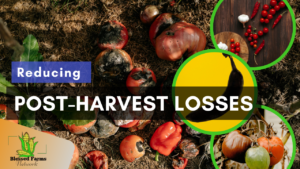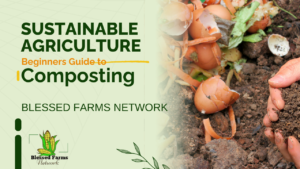Introduction
Farmers are most enthusiastic about innovations that solve three main problems, and hydroponics farming in Kenya is a major solution.
In the current system of improving agricultural systems, innovations are aimed at three main objectives: addressing the reduction in available farming land, tackling the challenges posed by climate change, and enhancing the efficiency of resource use for sustainable food production.
So what is Hydroponics Farming in Kenya?
Hydroponics farming in Kenya is a method of growing plants without soil, where nutrient-rich water solution is used instead. A growing medium, such as perlite, coconut coir, or vermiculite, can be used in some cases. Hydroponics farming in Kenya is a technology that has been in use for over a century, but its utilization in Kenya remains limited, with only a few companies introducing the technology to farmers. It has been recognized as a viable method for farming vegetables like peppers, cucumbers, tomatoes, and lettuce, as well as ornamental crops like roses and herbs.
Benefits of Hydroponics Farming in Kenya
Space Efficiency
One of the main advantages of hydroponics farming in Kenya is its ability to be used in small spaces. Hydroponics allows farmers to utilize vertical farming, thus maximizing land use. This enables small-scale farmers to grow their vegetables and herbs wherever they are located.
Increased Crop Yield
Studies have proven that hydroponics can dramatically increase crop yield. The reason is due to the nutrient specification that is provided to the plants, specific to each crop.
Water Conservation
Water scarcity is a pressing issue in many regions of Kenya. Hydroponics uses up to 90% less water than traditional farming! That’s because the water is recirculated within the system. It’s a game changer, especially in arid and semi-arid areas where droughts can be severe. Further, it solves the issue of climate change.
Reduced Pesticide Use
Lastly, hydroponics reduces the need for pesticides. Because the plants are grown in a controlled environment, you can minimize pest problems. This not only benefits the environment but also leads to healthier produce, making it a win-win for you and your customers!
Suitable Plants for Hydroponics Farming in Kenya
Many plants thrive in hydroponic systems, especially those that benefit from controlled environments and consistent nutrient delivery. Here are some common options suitable for Kenyan farmers:
Leafy Greens
- Lettuce: Varieties like Romaine and Butterhead grow well in hydroponics and are popular in local markets.
- Spinach: Quick-growing and nutrient-dense, perfect for local consumption.
- Kale: A popular superfood that thrives in hydroponic setups and has a growing market in Kenya.
Herbs
- Basil: Very popular for culinary uses and in high demand among local restaurants.
- Mint: Grows vigorously and is often used in beverages and dishes.
- Cilantro: Commonly used in cooking and easy to grow.
Fruiting Plants
-
- Tomatoes: Popular in home gardens and commercially; hydroponics can enhance yield and quality.
- Peppers: Bell peppers and chili peppers grow well and are widely consumed in Kenya.
- Strawberries: Can be grown in vertical systems for better yield and have a lucrative market.
Other Vegetables
- Cucumbers: Thrive in hydroponic systems and produce high yields.
- Radishes: Fast-growing and suitable for beginners, adding variety to your harvest.
- Beans: Such as green beans, can also be cultivated hydroponically, benefiting from the controlled environment.
Getting Started with Hydroponics Farming in Kenya: A Step-by-Step Guide
So, how can you dive into hydroponics farming in Kenya? Here’s a straightforward guide to help you get started!
Step 1: Choose the Right Hydroponic System
The first step is selecting a hydroponics system that fits the needs of your farm. It is recommended that a hydroponics beginner starts with a simple Deep Water Culture (DWC) system.
Step 2: Gather Essential Components
You’ll need the following materials:
- Containers: Use buckets or bins for the growing medium and plants.
- Air Pump and Air Stone: To oxygenate the nutrient solution.
- Nutrient Solution: Purchase a pre-mixed hydroponic nutrient solution, which is available in local agricultural supply stores.
- Growing Medium: Options include coconut coir, perlite, or rock wool, which can often be sourced locally.
- Net Pots: These hold the plants and growing medium.
- pH Testing Kit: To monitor and maintain the pH level of your nutrient solution.
- Grow Lights (if indoors): To ensure your plants receive adequate light, especially in low-light conditions.
Step 3: Setting Up your Hydroponics Garden
- Prepare the Containers: Clean your containers thoroughly to prevent contamination.
- Mix the Nutrient Solution: Follow the instructions on your nutrient solution package to mix the right concentration in your container.
- Set Up the Air Pump: Connect the air pump to the air stone and place it in the nutrient solution to provide oxygen to the roots.
- Add the Growing Medium: Fill the net pots with your chosen growing medium and insert the seedlings or seeds into the medium.
- Place the Net Pots: Position the net pots in the container, ensuring the roots are submerged in the nutrient solution.
Step 4: Monitor and Maintain Your Hydroponic Garden
- Light Requirements: If growing indoors, set your grow lights to provide 12-16 hours of light per day. Adjust the height of the lights as the plants grow.
- Check pH Levels: Regularly test the pH of your nutrient solution, aiming for a level between 5.5 and 6.5. Adjust with pH up or down solutions if necessary.
- Nutrient Management: Replace the nutrient solution every 2-3 weeks to ensure your plants receive the nutrients they need.
- Inspect for Pests: Keep an eye out for any pests or diseases, and address them promptly to avoid infestations.
Conclusion
In this world of agriculture, there are numerous technologies that are being developed. The hydroponics system is constantly changing and advancing to deal with challenges. As farmers, we are responsible for being up to date with new technologies and thus ensure high output at minimal cost.






Many kinds of Hydroponics system are available to supply,
At the same time, technical guidance can be provided to beginners.
Call me for more details by WhatsApp: +86 17335528867